The age old saying 'practice makes perfect' is still the very best advice that any student of the guitar can follow. Unfortunately for some practice consists of playing through their latest tune that happens to be in favour or more to the point playing snippets of this and that or more to the point, where they meet an obstacle that challenges their technique, therefore it is most important to look at the quality of your practice time. It has been demonstrated time and again that concentrated practice with a particular focus in mind produces the most beneficial results in a much shorter time span than random noodling on an instrument.
If you wish to take your playing to the next level I would like to suggest that you consider setting aside 15 minutes every day to a formulated practice routine. It should consist of exercise that stretch your technical capabilities and should include some form of assessment to enable you to keep track of your progress. Once this session is complete you should be warmed up and ready to continue with building and practicing your repertoire.
The material that I will include in this series of lessons should be useful for players from intermediate to advanced level.
C Major scale in 2 octaves - includes some position transitions.

Work through the very slowly at first and make sure that the fingering is as suggested, pay particular attention to the transitions. If you prefer to use the standard notation you will need to look at the tab to find the suggested string choice, likewise those using tab will need to take fingering advice from the standard notation.
Do not neglect to use the 4th finger. Please do not hide this finger because it happens to be your weakest, strengthening this finger will do wonders for your ability to play challenging pieces.
Pay particular attention to the transition points. The guide finger targets the new note moving up smoothly to bring your hand to the new position.
Once you are very familiar with the fingering start playing this scale with a metronome. Set it at a tempo that you can play 2 quavers per beat and make a note of the speed that you are very comfortable with. Play through at this tempo without stopping till your hand becomes rather warm and you feel tiredness creeping in then take a short break.
Next increase the metronome to a speed that is very challenging K don't overdo this and always stop and reKadjust if you begin to make errors.
Make a note of this speed and make it your weekly goal till it becomes very comfortable.
Continue with this cycle of long sessions at your comfort speed then a quick burst at challenge speed and you will be very surprised at how much you will improve in a very short time span.
Keep left hand fingers close to the fingerboard. The key to this is the thumb position at the back of the neck. The fingers should be pressing through to the thumb which should not protrude above the neck.
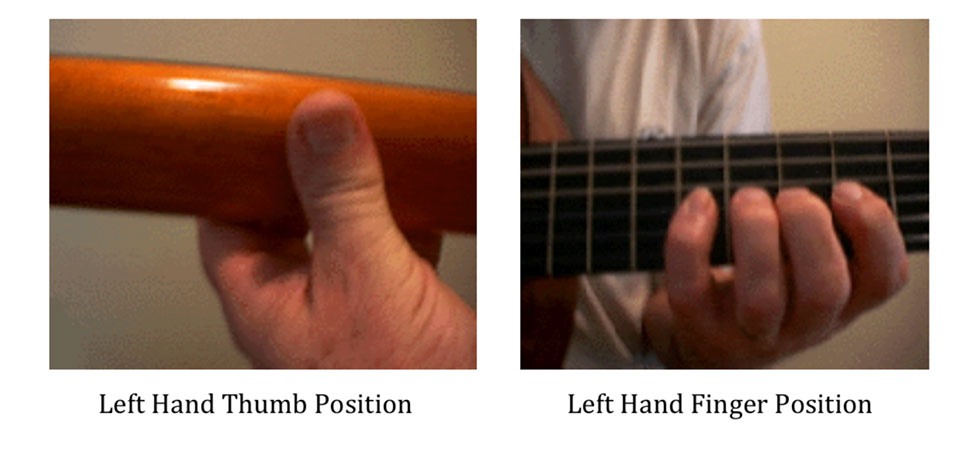
C Major Scale in broken thirds.
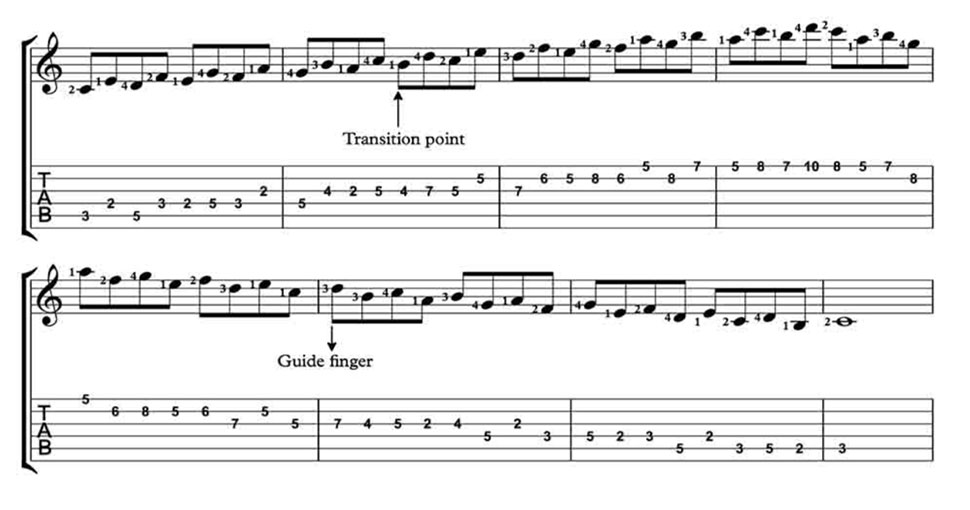
Follow the points listed below to achieve the optimum results
Finger Independence Workout
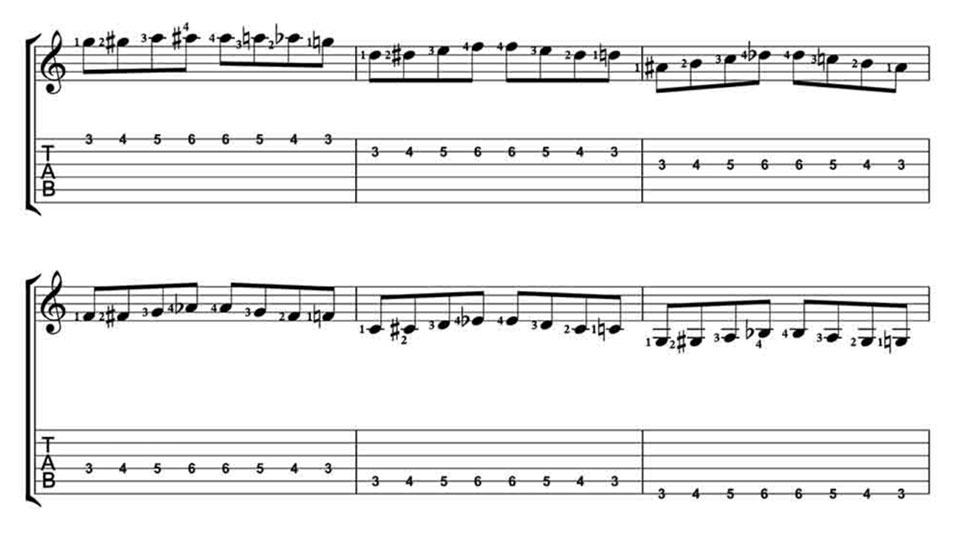
Hold down the fingers for the first four quavers in each bar. Once you have played these notes all four fingers should be on the fretboard. To play the last four quavers simply lift of the fingers one at a time.
Once you have completed the exercise you can then play it in reverse one fret higher – starting from the sixth string back to the first. Keep repeating this procedure till you reach the ninth position.
Diatonic Passage In Thirds
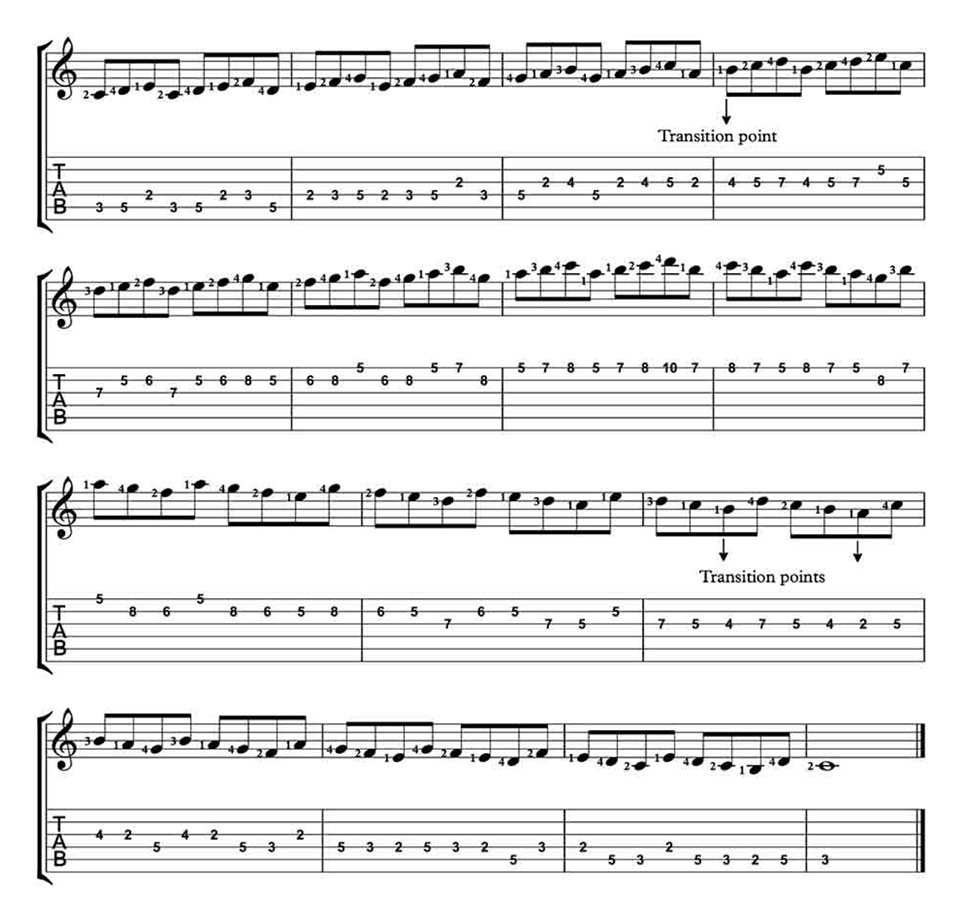
Notice that this lesson is a series of sequences based on a 1 2 3 1 pattern rising up the notes of the C major scale.
As in the previous lessons practice the transition points slowly in isolation to reinforce the finger memory.
Use the metronome to help evaluate your progress and include the results in your log.
This is the real tester
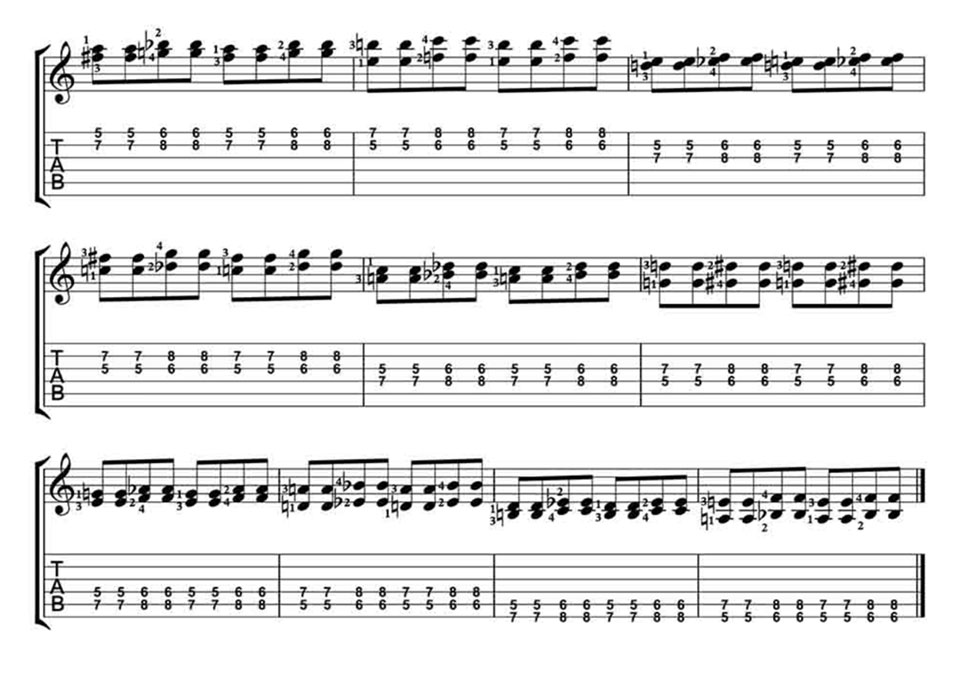
Important! – Hold down the notes on beat one for the entire bar whilst you play the following shapes on beat two then lift the fingers to play the initial shape for beat three and place them down again on beat four. Continue this for the entire exercise.
Once you have completed the exercise you can then play it in reverse one fret higher – starting from the sixth string back to the first. Keep repeating this procedure till you reach the ninth position.
Warning!
It may take some time to be able to play up to the ninth position without muscle fatigue so don’t overdo it. If your hand becomes over tired stop before you do damage to you left hand.
SHARE THIS PAGE!